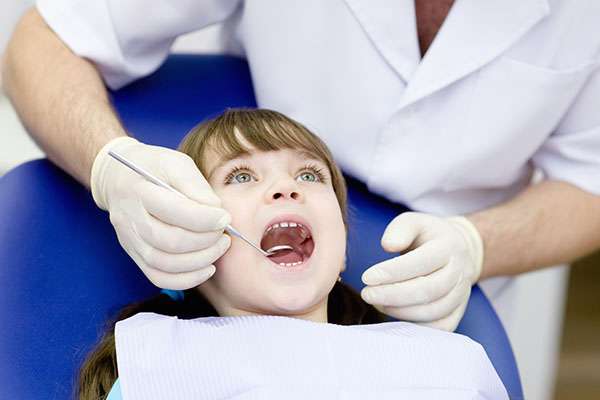Cavity Checks from a Family Dentist
 One of the main reasons people typically visit a family dentist is to get a cavity check. The American Dental Association states that 91% of adults in America over the age of 20 have had at least one cavity. Generally included in each six-month wellness examination, a cavity check can help both identify areas where cavities may be forming and monitor existing cavities that may be too small for a filing. Here are some things to expect during this type of appointment.
One of the main reasons people typically visit a family dentist is to get a cavity check. The American Dental Association states that 91% of adults in America over the age of 20 have had at least one cavity. Generally included in each six-month wellness examination, a cavity check can help both identify areas where cavities may be forming and monitor existing cavities that may be too small for a filing. Here are some things to expect during this type of appointment.
Common cavity detection methods
Unfortunately, many people wait until they have tooth pain before going to the dentist. Under these circumstances, any existing cavities are usually obvious without using any probing instruments. While certain cavities are large enough to be seen with the naked eye, others can only be identified upon closer examination using more sophisticated tools.
Probing tools
Dental professionals frequently use probing tools to poke at tooth enamel and determine whether it is hard or soft. A sickle probe is a tool used by dentists to check for cavities until more modern methods were developed. This probe made it easier for a dental professional to locate soft spots on the enamel that had been weakened by decay and worn down by erosion. A briault probe is curved, has sharp points on both ends, and is useful for locating soft spots in between the teeth. A dental hygienist may still use these probes during a cleaning to determine if further examination is needed in a specific area of the mouth.
X-rays
A cavity can be easily identified in an X-ray by a family dentist. It will show up as a dark spot in a white tooth. X-rays can pinpoint the location and depth of cavities, including those in between the teeth. Because of this, most dentists recommend having imagery taken regularly. In certain cases, especially in areas between the teeth, cavities may start to form that are not visible to the naked eye. Getting an X-ray can identify these areas so a dentist can keep a close watch on them. Although less common, cavities can also form underneath previous fillings. When this happens, the only way to see the new decay is with an X-ray.
Lasers
There are patients with tooth decay that starts out underneath the enamel instead of on the surface of the tooth. In these cases, neither probing tools or X-rays are effective at identifying the damage. Subsurface cavities can only be located with the help of lasers. During this cavity detection method, the laser that is directed at the teeth will pass through healthy enamel but reflect back off of any decay.
Conclusion
Far from being an unnecessary nuisance, getting frequent cavity checks from a family dentist can help prevent further decay and damage to teeth. Identifying areas to watch or fix can allow the teeth to stay healthy and last as long as possible. A dentist may use one or all three of these methods to look for cavities to make sure undetected decay does not exist.
Request an appointment or call Dragonfly Dental of Port Charlotte at 941-676-9225 for an appointment in our Port Charlotte office.
Related Posts
Taking young children to the family dentist can be overwhelming at times, especially because they are more prone to dental fear and anxiety. However, dental care is essential for children, just as it is for adults, and should start at a very young age. The American Dental Association recommends that children visit the dentist as…
A family dentist is a dental professional that specializes in dental treatment for patients of a wide range of ages. They typically offer diagnostic, preventive, restorative, and cosmetic services, and they are designed to address the long-term dental needs of their patients. This review discusses four advantages family dentists offer their patients.Family dentists specialize in…
A family dentist is a dental health professional that can provide services for children, teenagers, and adults. Although their focus is mostly on preventive dentistry, they can treat the large majority of oral care issues. Whether you are searching for a dentist to monitor your child’s dental development or are interested in treatment for yourself,…
